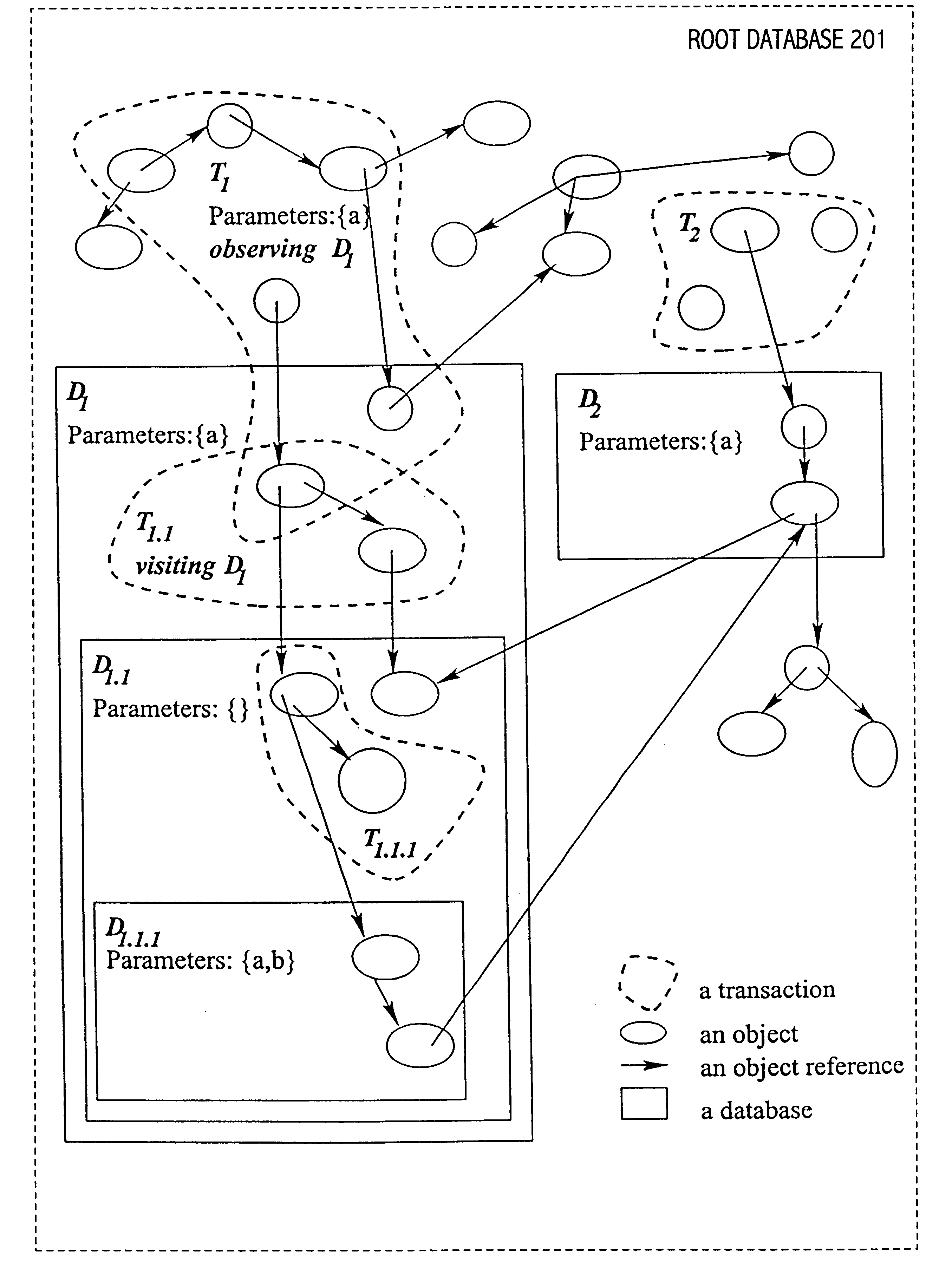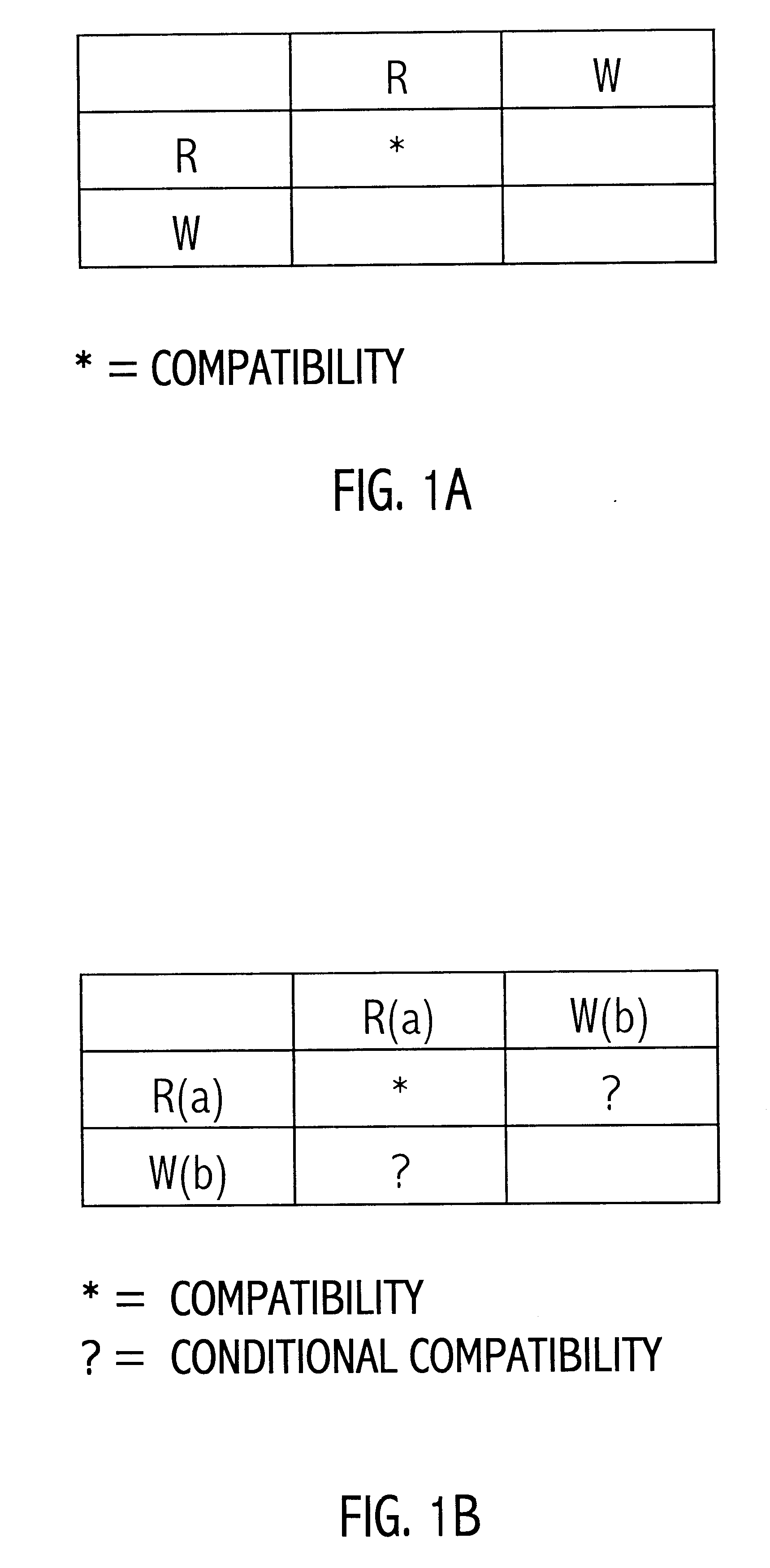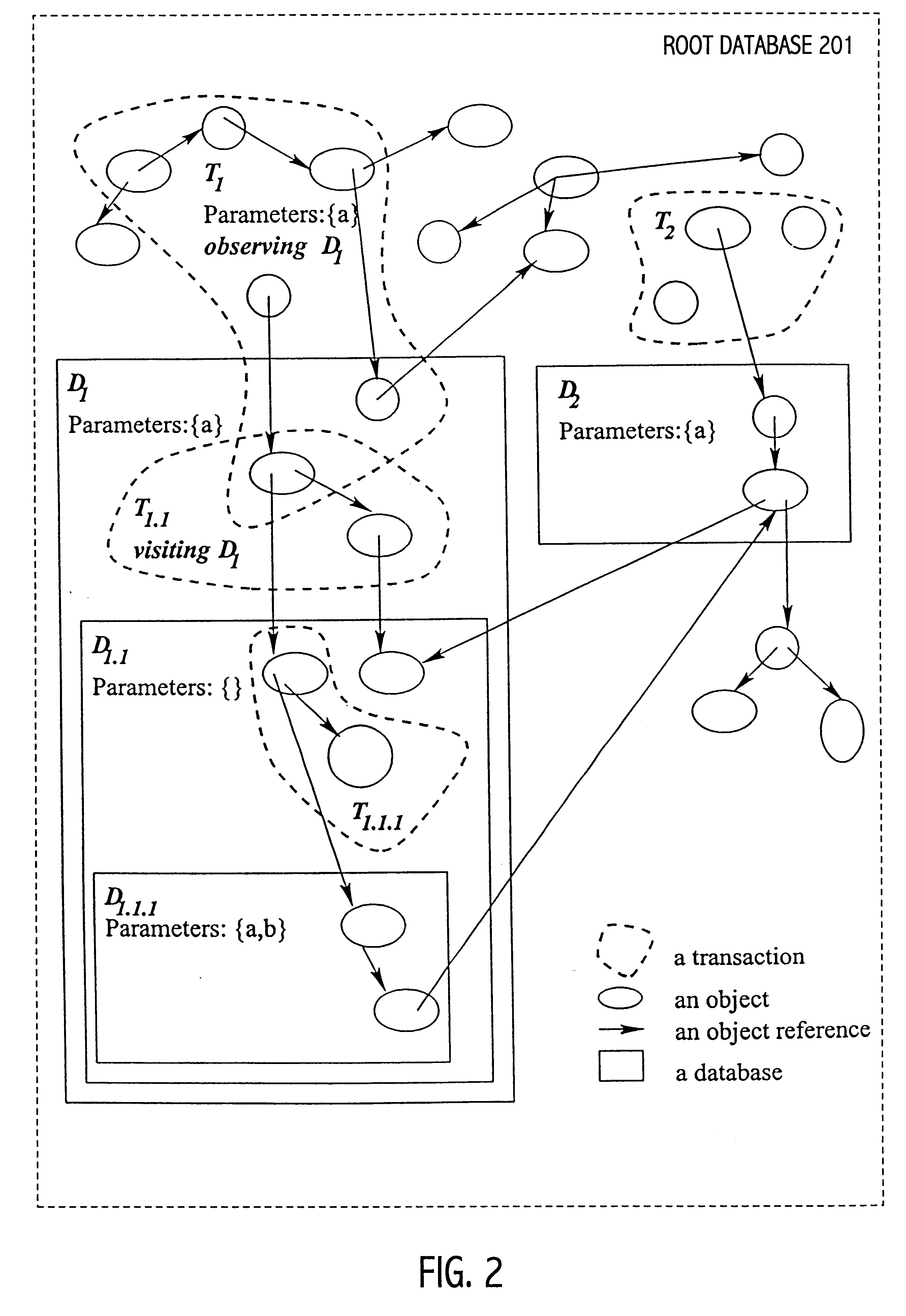Implementation of nested databases using flexible locking mechanisms
a technology of flexible locking mechanism and nested database, applied in the field of data system transaction model, can solve the problem that commercially available transaction processing system does not typically provide native support for nested database, and achieve the effect of facilitating upda
- Summary
- Abstract
- Description
- Claims
- Application Information
AI Technical Summary
Benefits of technology
Problems solved by technology
Method used
Image
Examples
Embodiment Construction
)
The description that follows presents a set of techniques, systems, objects, functional sequences and data structures associated with concurrency controls for cooperative operations on resources. An exemplary implementation focuses on an environment in which the semantics of nested databases are provided using a lock delegation mechanism and ignore conflict relationships between transactions. In some realizations, uses of lock mode parameters by transactions are transformed into a form suitable for coordination of transactions using locks in a transaction processing system (TPS) that allows one transaction to ignore conflicts with a set of other transactions.
Some realizations in accordance with the present invention are particularly adapted to providing transaction generating applications with a nested database abstraction in transaction processing systems that provide primitives that allow specification of ignore conflicts relationships between transactions. Accordingly, some impl...
PUM
 Login to View More
Login to View More Abstract
Description
Claims
Application Information
 Login to View More
Login to View More - R&D
- Intellectual Property
- Life Sciences
- Materials
- Tech Scout
- Unparalleled Data Quality
- Higher Quality Content
- 60% Fewer Hallucinations
Browse by: Latest US Patents, China's latest patents, Technical Efficacy Thesaurus, Application Domain, Technology Topic, Popular Technical Reports.
© 2025 PatSnap. All rights reserved.Legal|Privacy policy|Modern Slavery Act Transparency Statement|Sitemap|About US| Contact US: help@patsnap.com



